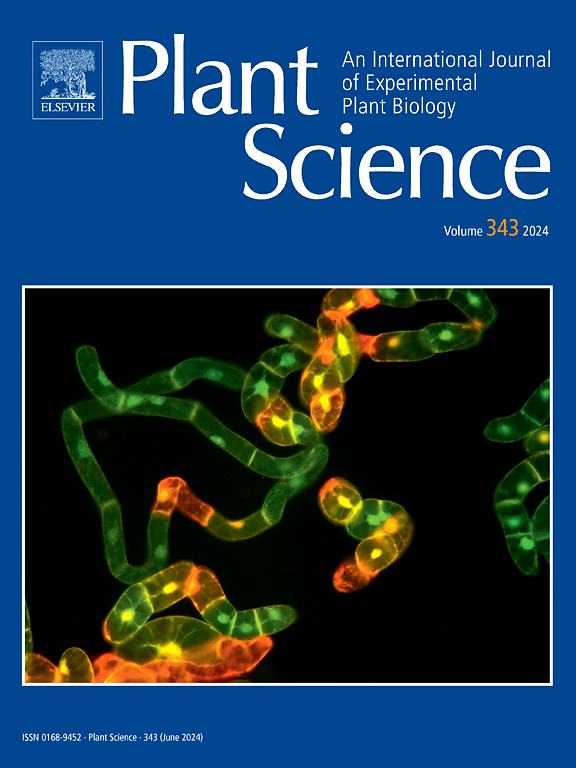LbMYB368 from the recretohalophyte Limonium bicolor promotes salt gland development and salinity tolerance
IF 4.2
2区 生物学
Q2 BIOCHEMISTRY & MOLECULAR BIOLOGY
引用次数: 0
Abstract
Halophytes can grow and reproduce normally in an environment containing more than 200 mM NaCl, offering untapped gene resources for improving crop salinity tolerance. As a recretohalophyte, Limonium bicolor can secrete excess Na+ through salt glands, specialized structures on the leaf and stem epidermis. Here, we identified a MYB transcription factor gene, LbMYB368, that is highly expressed during salt gland development. We confirmed its expression in salt glands using RNA in situ hybridization and a promoter reporter construct. To investigate in detail the roles of LbMYB368 in salinity tolerance, we overexpressed and knocked down the gene, via virus-induced gene silencing (VIGS), in L. bicolor. The transgenic L. bicolor overexpression lines developed more salt glands, while the VIGS plants had fewer salt glands. The salt secretion ability and salt tolerance of these plants were correlated with the changes in salt gland development, indicating that LbMYB368 plays an important role in the salt tolerance of L. bicolor by enhancing salt gland development and salt secretion. We also investigated the effect of LbMYB368 on enhanced salinity tolerance when heterologously expressed in Arabidopsis to assess its potential applications in non-halophytes for future conferring salinity tolerance in crops.
盐生植物可以在含超过 200 mM NaCl 的环境中正常生长和繁殖,这为提高作物耐盐性提供了尚未开发的基因资源。作为一种返盐植物,Limonium bicolor 可以通过盐腺(叶片和茎表皮上的特殊结构)分泌过量的 Na+。在这里,我们发现了一个在盐腺发育过程中高度表达的 MYB 转录因子基因 LbMYB368。我们利用 RNA 原位杂交和启动子报告构建物证实了该基因在盐腺中的表达。为了详细研究 LbMYB368 在耐盐性中的作用,我们通过病毒诱导基因沉默(VIGS)技术在双色禾中过表达和敲除了该基因。过表达的转基因 L. bicolor 株系长出了更多的盐腺,而 VIGS 株系则长出了更少的盐腺。这些植株的盐分分泌能力和耐盐性与盐腺的发育变化相关,表明 LbMYB368 通过促进盐腺发育和盐分分泌在 L. bicolor 的耐盐性中发挥了重要作用。我们还研究了 LbMYB368 在拟南芥中异源表达时对增强耐盐性的影响,以评估其在非拟南芥中的潜在应用,以便将来赋予作物耐盐性。
本文章由计算机程序翻译,如有差异,请以英文原文为准。
求助全文
约1分钟内获得全文
求助全文
来源期刊

Plant Science
生物-生化与分子生物学
CiteScore
9.10
自引率
1.90%
发文量
322
审稿时长
33 days
期刊介绍:
Plant Science will publish in the minimum of time, research manuscripts as well as commissioned reviews and commentaries recommended by its referees in all areas of experimental plant biology with emphasis in the broad areas of genomics, proteomics, biochemistry (including enzymology), physiology, cell biology, development, genetics, functional plant breeding, systems biology and the interaction of plants with the environment.
Manuscripts for full consideration should be written concisely and essentially as a final report. The main criterion for publication is that the manuscript must contain original and significant insights that lead to a better understanding of fundamental plant biology. Papers centering on plant cell culture should be of interest to a wide audience and methods employed result in a substantial improvement over existing established techniques and approaches. Methods papers are welcome only when the technique(s) described is novel or provides a major advancement of established protocols.
 求助内容:
求助内容: 应助结果提醒方式:
应助结果提醒方式:


